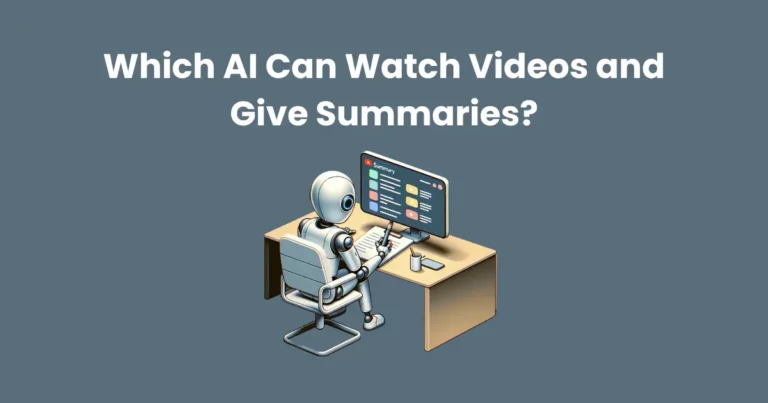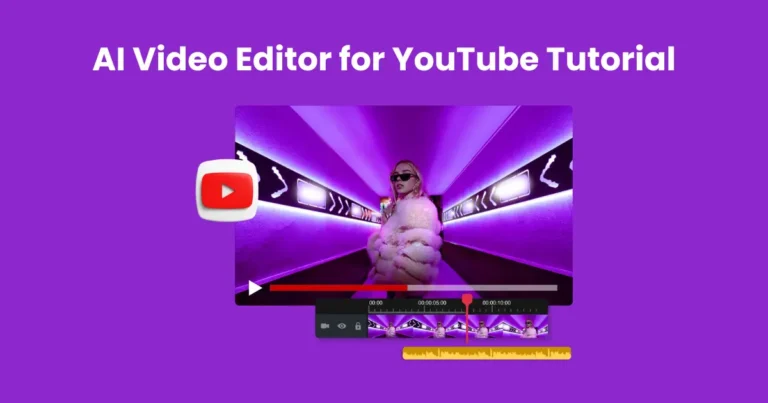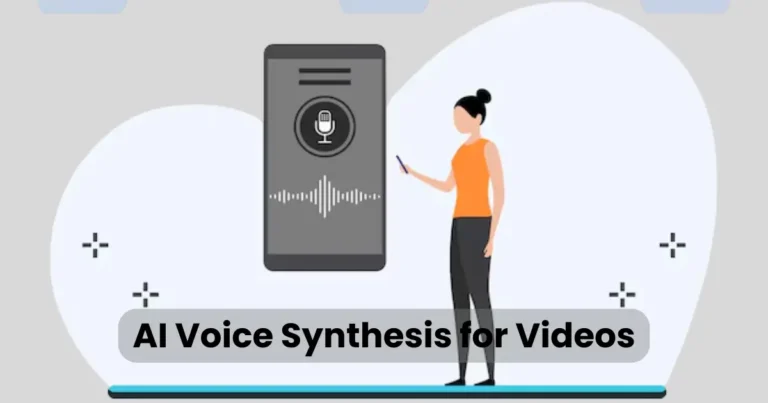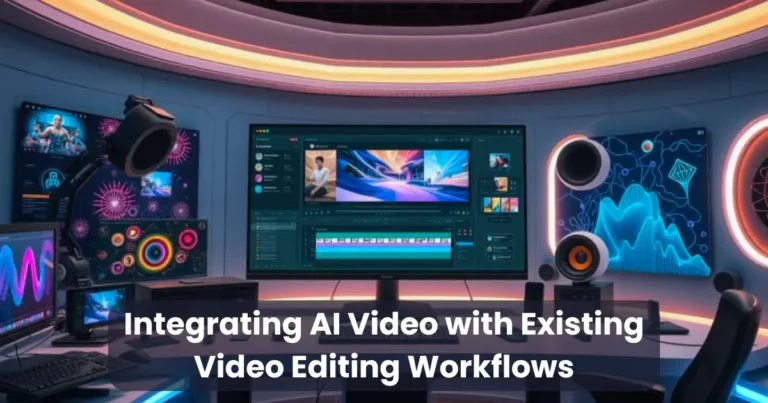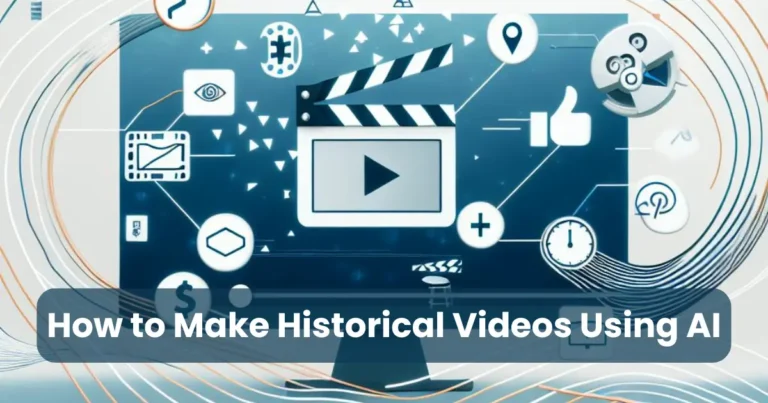Overcoming Limitations of Current AI Video Tools
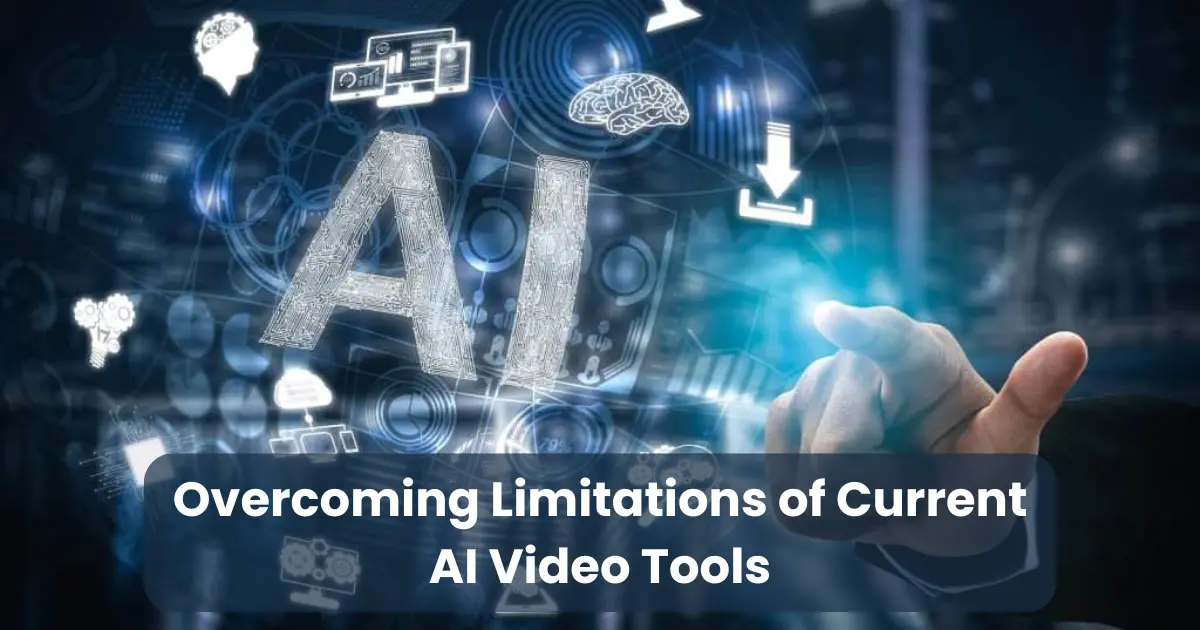
Contents
As artificial intelligence reshapes the digital landscape, many creators find themselves overcoming limitations of current AI video tools to unlock their full potential. These tools have undeniably accelerated video production, allowing users to generate clips from text prompts, automate editing, and simulate human-like performances. However, despite these advancements, several obstacles still restrict creativity, realism, and efficiency.
In today’s fast-paced content economy, simply generating video is no longer enough. Creators need flexibility, precision, and contextual awareness all of which current AI video systems often lack. Whether you’re a developer aiming to improve machine learning pipelines or a content strategist looking to enhance storytelling, recognizing these challenges is crucial. Fortunately, with emerging technologies and smarter integration strategies, we can push beyond these barriers.
In this article, we’ll explore the most common limitations of AI video tools and provide actionable strategies to overcome them ensuring that your content remains impactful, innovative, and future-ready.
Common Limitations of Current AI Video Tools
While AI video tools have revolutionized the industry, there are several challenges that creators face when using these systems. Understanding these limitations is key to overcoming them and improving video production quality. Here are the most common drawbacks:
1. Lack of Creative Control
One of the most significant drawbacks of current AI video tools is the lack of creative control. These tools often work within predefined templates and parameters, which can limit the user’s ability to personalize the content. Whether it’s adjusting the pacing, tone, or style, creators often find themselves confined to rigid outputs that don’t match their original vision. As AI technology evolves, more advanced customization options are needed to give creators the freedom to express their creativity without limitations.
2. Limited Realism in Outputs
While AI-generated videos can look impressive at first glance, they often fall short when it comes to realism. The AI may struggle with creating lifelike facial expressions, natural movement, or accurate lip-syncing. For example, characters might appear stiff or their facial features may not align with the audio, making the final product appear unnatural. This limitation is particularly evident in animated or human-like video generation, where nuance and subtlety are crucial for conveying emotion and authenticity.
3. High Computational Costs
AI video tools, especially those producing high-quality content, require substantial computational resources. The process of training models or rendering detailed videos can be extremely resource-intensive, involving powerful GPUs and large datasets. This translates into high operational costs, which can be prohibitive for small businesses, independent creators, or startups. While cloud-based solutions provide some relief, the price tag for sustained use of AI video tools can be a significant barrier.
4. Poor Contextual Understanding
Another limitation is the lack of contextual understanding. AI video tools typically struggle to grasp the deeper meaning behind the content they generate. For instance, AI can produce videos from scripts or text prompts, but it often fails to interpret tone, cultural nuances, or complex storylines accurately. This disconnect can lead to videos that miss the mark, resulting in incoherent or misaligned messaging that does not resonate with the target audience. For creators, this limitation is frustrating as it diminishes the emotional or intellectual impact of the video content.
5. Licensing and Ethical Concerns
As AI video generation becomes more accessible, concerns about licensing and ethics have emerged. For example, AI tools that generate human-like avatars or use real-world footage can create legal and ethical dilemmas. Questions arise regarding consent, ownership of AI-generated content, and the potential misuse of technology, such as creating misleading or harmful videos. Creators and developers need to ensure that AI video tools are used responsibly, adhering to copyright laws and ethical standards to avoid legal challenges.
Why Overcoming These Limitations Matters
Overcoming limitations of current AI video tools isn’t just a technical necessity it’s a strategic imperative for anyone invested in future-ready content creation. As artificial intelligence continues to influence how we tell stories, teach, sell, and communicate, the ability to break past current constraints determines who leads and who lags behind in the digital era.

Enhancing Creativity and Authenticity
First and foremost, overcoming limitations of current AI video tools empowers creators to inject more authenticity and originality into their work. Rigid templates and generic outputs often dilute a brand’s voice or weaken storytelling. By eliminating these barriers, content becomes more personalized, emotionally resonant, and aligned with a creator’s intent. This shift not only improves audience engagement but also builds trust and recognition.
Improving User Experience and Accessibility
When AI tools become more accurate, realistic, and context-aware, the end-user experience improves dramatically. For instance, a training video that mimics natural human interaction holds more attention and aids in retention. Similarly, marketers can deliver targeted content that feels relatable and genuine. Furthermore, optimized tools with lower computational demands can open up AI video creation to broader, more diverse audiences, fostering inclusion and innovation.
Boosting Productivity and Scalability
Another reason why overcoming limitations matters is the potential for scalable, efficient production. Addressing issues like high computational costs and poor contextual accuracy helps teams produce high-quality content faster, with fewer revisions. This is especially important for media agencies, educators, and businesses that require frequent and varied content at scale.
Ethical usage of AI video tools is becoming a growing concern. By confronting issues related to content ownership, deepfakes, and copyright risks, creators and developers can build systems that are not only more powerful but also more responsible. Proactively addressing these concerns fosters trust in AI technologies, which is vital for long-term adoption.
Staying Competitive in a Rapidly Evolving Market
Finally, those who take the initiative in overcoming limitations of current AI video tools gain a competitive edge. As technology evolves, so do audience expectations. Companies and individuals who can deliver high-quality, humanized, and dynamic content will stand out in saturated digital markets whether on social media, in eLearning, or across entertainment platforms.
Strategies for Overcoming Limitations of Current AI Video Tools
To stay ahead in the evolving landscape of video content, creators and developers must focus on overcoming limitations of current AI video tools through proactive strategies. Fortunately, with advancements in AI research and practical applications, there are several approaches that can significantly enhance the capabilities and flexibility of these tools.

1. Incorporating Human-in-the-Loop Systems
One of the most effective strategies is implementing human-in-the-loop (HITL) systems. This hybrid approach allows human oversight during various stages of video generation such as script interpretation, animation adjustment, and emotion alignment. Human feedback helps correct AI errors, refine output quality, and ensure that the final product aligns with the creator’s intent. As a result, AI becomes a creative collaborator rather than an autonomous executor.
2. Enhancing Multimodal Learning
Multimodal learning involves combining different types of data such as text, audio, images, and video to train more context-aware AI models. By doing this, tools can better understand nuance and intent. For instance, aligning a spoken script with facial expressions and matching gestures to tone enhances realism and coherence. This strategy addresses issues like poor contextual understanding and robotic behaviors in AI-generated characters.
3. Leveraging Transfer and Meta Learning
Transfer learning and meta learning allow AI models to apply knowledge learned from one task to another. These approaches reduce training time and improve adaptability, enabling tools to produce better results even with limited data. For example, a model trained on cinematic dialogue can apply its learning to educational videos or animated stories with minimal adjustment thereby enhancing output diversity and accuracy.
4. Using Open-Source Frameworks
Open-source AI frameworks like TensorFlow, PyTorch, and Hugging Face offer transparency and community-driven improvement. Developers can customize and extend these frameworks to create more powerful and specialized video tools. Moreover, open-source libraries often contain pre-trained models and optimization techniques that accelerate development while lowering costs addressing high computational demands effectively.
5. Combining AI with Traditional Animation Techniques
Instead of relying solely on AI, many creators are blending it with traditional animation methods. For example, using AI to generate rough drafts or automate repetitive tasks (like lip-syncing), and then refining those outputs manually. This balance ensures higher quality while maintaining creative control. In professional environments, this hybrid model delivers speed without sacrificing artistry.
These strategies not only resolve current issues but also future-proof AI video creation processes. By integrating human creativity, smarter algorithms, and collaborative tools, we can overcome the limitations of current AI video tools and redefine what’s possible in digital storytelling.
Emerging Innovations That Address These Challenges
As technology evolves rapidly, several emerging innovations are already making strides toward overcoming limitations of current AI video tools. These breakthroughs are reshaping the capabilities of video generation, offering more flexibility, realism, and creative power to users across industries.

1. Generative Adversarial Networks (GANs) for Video
GANs have transformed the field of image and video generation by enabling AI to produce more realistic and detailed visuals. Advanced GAN-based models like StyleGAN and VideoGAN allow for dynamic scene creation, human-like facial movements, and higher resolution outputs. These networks not only enhance realism but also reduce artifacts that commonly appear in AI-generated videos.
2. Transformer Models for Temporal Understanding
Transformers, originally popularized in natural language processing, are now being adapted for video applications. Models like VideoGPT and TimeSformer can understand the temporal structure of video sequences, allowing for smoother motion, better lip-syncing, and contextually accurate animations. These innovations address the issue of poor timing and continuity in AI videos.
3. Real-Time Motion Capture Integration
Combining AI with real-time motion capture technology bridges the gap between artificial generation and real human behavior. By using affordable motion tracking devices or even smartphone sensors, creators can feed live movement data into AI systems. This hybrid solution enables more natural animation, accurate gestures, and faster prototyping.
4. Diffusion Models for Higher Fidelity
Diffusion models, such as those used in image generation tools like DALL·E 3 or Imagen, are being adapted for video. These models create content through a gradual refinement process, producing hyper-realistic textures and transitions. When applied to video, they offer a promising way to overcome the current lack of visual depth and detail.
5. AI-Powered Voice Cloning and Lip Syncing
Advanced text-to-speech and voice cloning tools, combined with facial animation models, are significantly improving lip-sync accuracy and emotional expression. Tools like ElevenLabs, Resemble AI, and Wav2Lip are already powering hyper-realistic digital avatars that talk, emote, and respond in real-time minimizing the uncanny valley and maximizing audience connection.
These innovations are not just theoretical they’re being integrated into next-gen platforms and production pipelines. By adopting and adapting these technologies, content creators can stay at the forefront of AI video generation and continue overcoming limitations of current AI video tools with greater confidence and control.
Best Practices for Developers and Creators
To fully capitalize on the power of artificial intelligence while overcoming limitations of current AI video tools, developers and content creators must adopt strategic, ethical, and creative best practices. These approaches ensure quality, scalability, and long-term relevance in an evolving media landscape.

1. Prioritize Ethical AI Development
Ethical considerations should come first. Developers must ensure that AI-generated videos are transparent, fair, and non-deceptive. This means clearly labeling AI content, avoiding deepfake misuse, and respecting intellectual property rights. Ethical AI not only builds public trust but also prevents potential legal setbacks.
2. Focus on Data Quality, Not Just Quantity
One key to overcoming AI limitations is training models on high-quality, diverse datasets. Developers should avoid biased, repetitive, or low-resolution data. Clean, well-labeled, and culturally inclusive datasets improve AI’s contextual understanding and visual realism.
3. Involve Human Feedback Loops
For creators, integrating a human-in-the-loop workflow remains essential. Regular feedback during production helps AI tools refine accuracy, especially in facial expressions, voice inflections, and timing. Human supervision ensures the final video feels intentional, not mechanical.
4. Use Modular Design for Scalability
Develop AI tools with a modular architecture, allowing developers to update specific components like voice synthesis or animation engines without rebuilding the entire system. This makes scaling easier and encourages continuous innovation.
5. Keep Experimenting with New AI APIs and Tools
The field is evolving fast. Creators should routinely test emerging AI tools and APIs to find better workflows. Whether experimenting with new lip-sync engines or testing better rendering pipelines, continuous exploration leads to improved efficiency and results.
6. Blend Automation with Artistic Input
The most effective content combines the efficiency of AI with the originality of human creativity. Use AI for repetitive tasks like auto-animation or speech syncing but maintain creative direction manually. This balance ensures that the final product feels both polished and personal.
By following these best practices, developers and creators can navigate the complexities of current technologies while steadily overcoming limitations of current AI video tools. Doing so not only improves project outcomes but also ensures long-term success in a rapidly shifting digital media world.
Conclusion
In today’s fast-paced digital ecosystem, overcoming limitations of current AI video tools is not just a technical challenge it’s a creative necessity. As AI continues to shape the way we produce, share, and consume video content, addressing its current constraints will define the future of storytelling, marketing, education, and entertainment.
From enhancing realism and contextual understanding to reducing ethical risks and improving accessibility, the potential gains are immense. Innovations like GANs, diffusion models, and transformer-based systems are already pushing the boundaries, while best practices such as ethical development, human feedback integration, and modular tool design help creators and developers stay in control.
By embracing a proactive mindset, continuously exploring new technologies, and balancing automation with creativity, individuals and teams can unlock the full power of AI video. Ultimately, the goal isn’t to replace human ingenuity but to amplify it. And the path to that future begins by consciously and strategically overcoming limitations of current AI video tools today.

